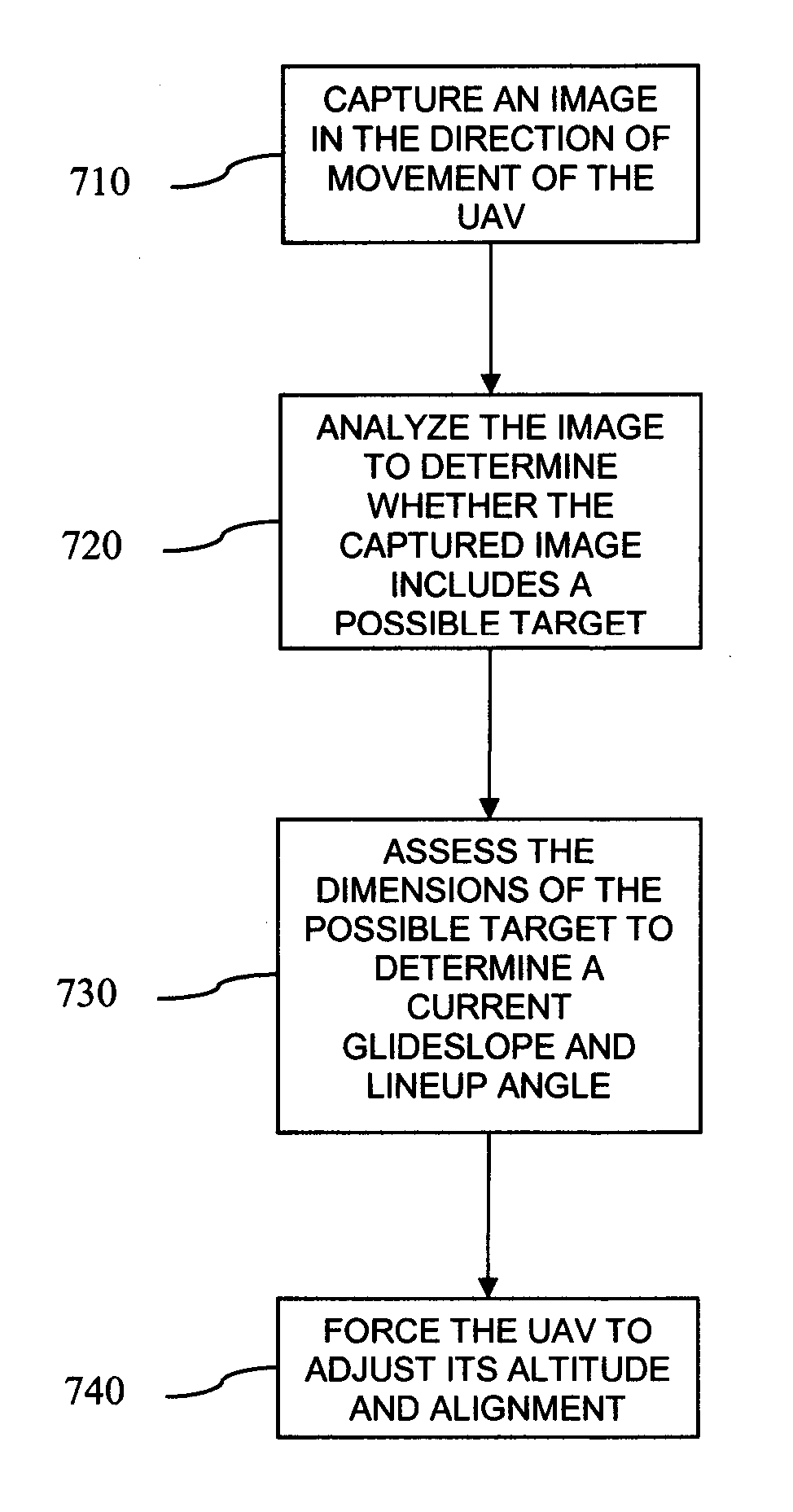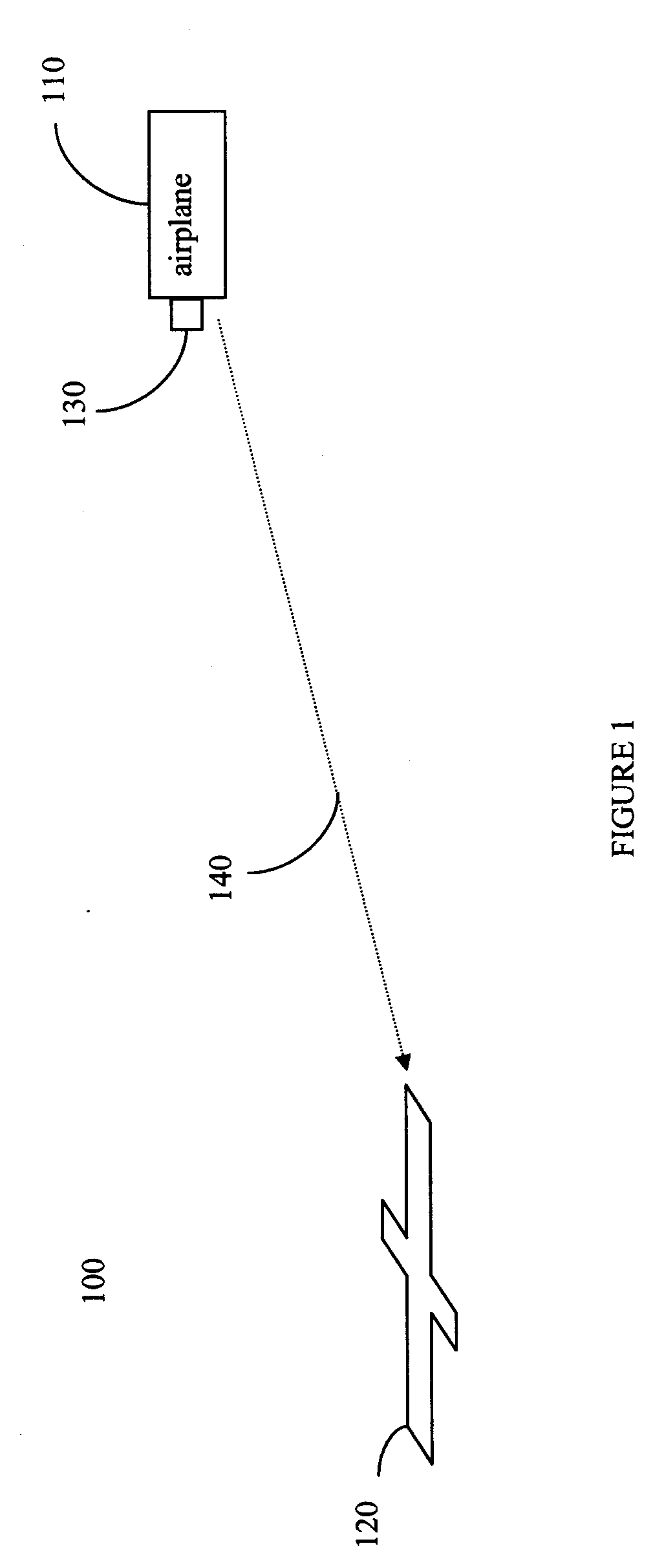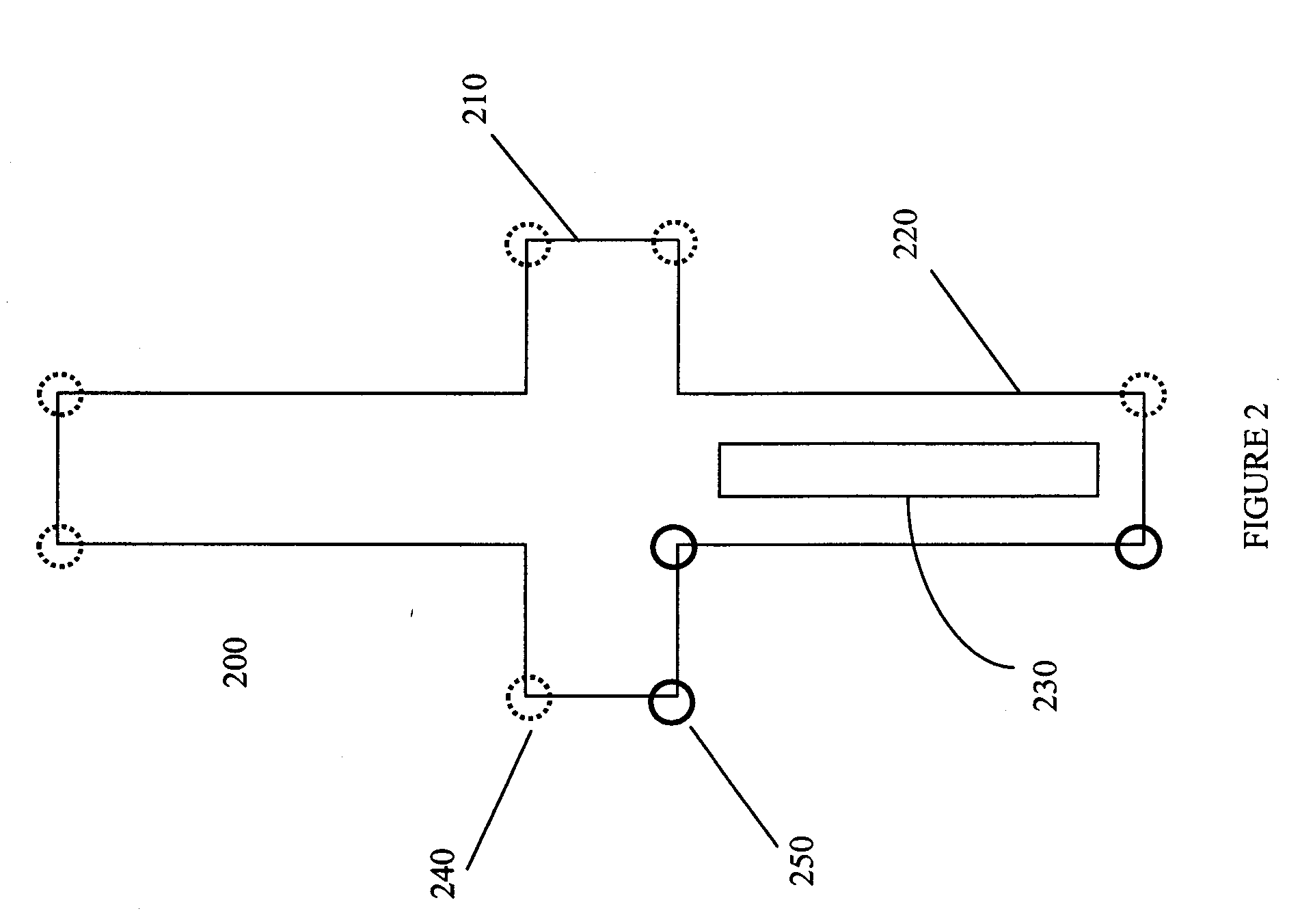Vision-based automated landing system for unmanned aerial vehicles
an automated landing and drone technology, applied in the direction of vehicle position/course/altitude control, process and machine control, instruments, etc., can solve the problems of burdensome use, damage to the drone, and high training requirements of pilots, so as to achieve the effect of safe landing of the dron
- Summary
- Abstract
- Description
- Claims
- Application Information
AI Technical Summary
Benefits of technology
Problems solved by technology
Method used
Image
Examples
Embodiment Construction
[0022]The present invention provides a vision-based automated system for landing UAVs, as shown in FIG. 1. The system 100 includes a UAV 110, which may be any micro, small, or large UAV. The system of the invention also includes one or more targets 120 positioned at one or more intended landing locations. A target must be of a known geometry and possess a minimum of three salient reference points (known hereinafter as “signature corners”). Signature corners are any reference points which can be used to regenerate the shape of an object. Examples of targets 120 may include, but are not limited to, runways, taxiways, buildings, or the entire airfield. In a preferred embodiment, the target 120 is a bilaterally symmetric cross.
[0023]The placement of the target 120 at the intended landing location may be permanent or fixed (i.e. removable). In one embodiment of the invention, the target 120 may be painted on a runway or other landing site. In another embodiment, the target 120 may be fix...
PUM
 Login to View More
Login to View More Abstract
Description
Claims
Application Information
 Login to View More
Login to View More - R&D
- Intellectual Property
- Life Sciences
- Materials
- Tech Scout
- Unparalleled Data Quality
- Higher Quality Content
- 60% Fewer Hallucinations
Browse by: Latest US Patents, China's latest patents, Technical Efficacy Thesaurus, Application Domain, Technology Topic, Popular Technical Reports.
© 2025 PatSnap. All rights reserved.Legal|Privacy policy|Modern Slavery Act Transparency Statement|Sitemap|About US| Contact US: help@patsnap.com



